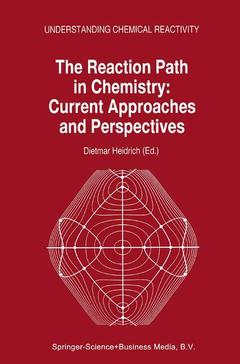The Reaction Path in Chemistry: Current Approaches and Perspectives, 1995 Understanding Chemical Reactivity Series, Vol. 16
Langue : Anglais
Coordonnateur : Heidrich D.

The so-called reaction path (RP) with respect to the potential energy or the Gibbs energy ("free enthalpy") is one of the most fundamental concepts in chemistry. It significantly helps to display and visualize the results of the complex microscopic processes forming a chemical reaction. This concept is an implicit component of conventional transition state theory (TST). The model of the reaction path and the TST form a qualitative framework which provides chemists with a better understanding of chemical reactions and stirs their imagination. However, an exact calculation of the RP and its neighbourhood becomes important when the RP is used as a tool for a detailed exploring of reaction mechanisms and particularly when it is used as a basis for reaction rate theories above and beyond TST. The RP is a theoretical instrument that now forms the "theoretical heart" of "direct dynamics". It is particularly useful for the interpretation of reactions in common chemical systems. A suitable definition of the RP of potential energy surfaces is necessary to ensure that the reaction theories based on it will possess sufficiently high quality. Thus, we have to consider three important fields of research: - Analysis of potential energy surfaces and the definition and best calculation of the RPs or - at least - of a number of selected and chemically interesting points on it. - The further development of concrete vers ions of reaction theory beyond TST which are applicable for common chemical systems using the RP concept.
An introduction to the nomenclature and usage of the reaction path concept; D. Heidrich. From reaction path to reaction mechanism: Fundamental groups and symmetry rules; P. G. Mezey. Loose definitions of reaction path; X. Chapuisat. Role and treatment of zero eigenvalues of rotation in the Cartesian force constant matrix along the reaction path; T. Iwai, A. Tachibana. The invariance of the reaction path description in any coordinate system; W. Quapp. Second-order methods for the optimization of molecular potential energy surfaces; T. Helgaker et al. Gradient extremals and their relation to the minimum energy path; W. Quapp et al. Density functional theory - calculations of potential energy surfaces and reaction paths; G. Seifert, K. Krüger. Using the reaction path concept to obtain rate constants from ab initio calculations; A. D. Isaacson. Direct dynamics methods for the calculation of reaction rates; D. G. Truhlar. Ab initio studies of reaction paths in excited- state hydrogen transfer processes; A. L. Sobolewski, W. Domcke. Viewing the reaction path with the help of time-resolved femtosecond spectroscopy; C. Meier, V. Engel. Index.
The reaction pathway (RP) technique is a powerful tool in theoretical chemistry and chemical reaction theory. The present book discusses the background of the concept, both mathematical and physical, and outlines new developments. Different approaches to the RP are described, with particular emphasis on gradient extremals and the treatment of zero eigenvalues of rotation in the Cartesian Hessian matrix along the RP.
Date de parution : 12-2010
Ouvrage de 300 p.
15.5x23.5 cm
Disponible chez l'éditeur (délai d'approvisionnement : 15 jours).
Prix indicatif 158,24 €
Ajouter au panierMots-clés :
chemical reaction; kinetics; physical chemistry; spectroscopy; structure
© 2024 LAVOISIER S.A.S.



